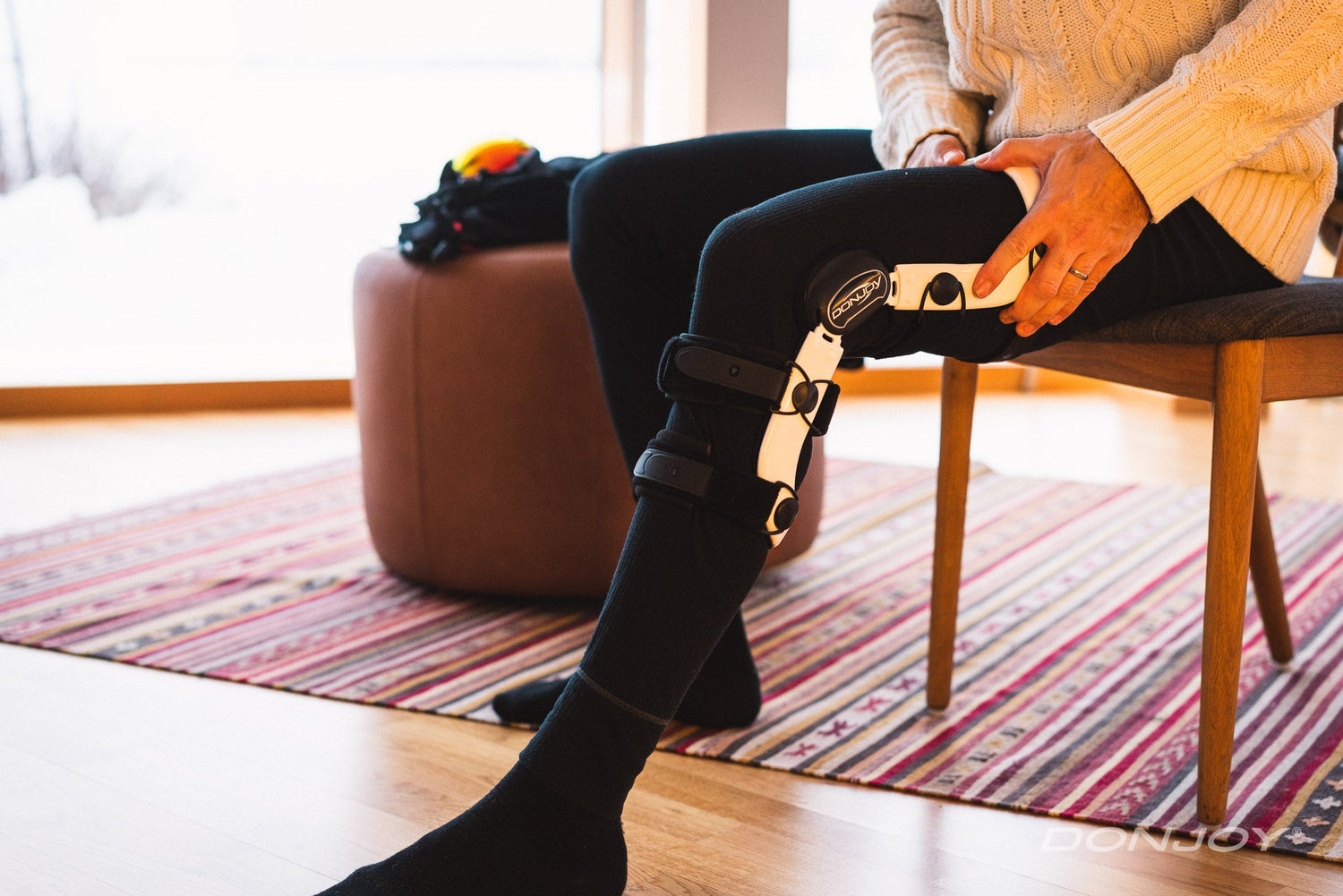Ski Season 2025026
This winter, many skiers will return to the slopes. In a typical ski season, 1.5-1.8 million Brits would ski/snowboard each Winter (the UK has third biggest skiing population in Europe, after France and Germany).
Sadly, many skiers get injured every season. Estimates have been put at:
- Skiing
- 3 injuries/1000 ski days
- Snowboarding
- 4-16 injuries/1000 ski days
With the numbers that hit the slopes, up to 46,000 people will be injured in a typical year, and many of these will be knee injuries inclduing anterior cruciate ligament (ACL) rupture, which often requires surgery to repair.
ACL Rupture
Ligaments are elastic bands of tissue that attach bones together. In the knee, four ligaments connect the thighbone (femur) to the shin bone (tibia), allowing the knee joint to move and rotate with strength and stability. The ACL, located in the center of the knee, controls forward movement and rotation, and helps prevent the knee from hyperextending.
ACL injuries happen when too much force is placed on the ligament and the tissue is stretched or torn. ACL sprains and tears most often result from sudden stops, abrupt changes in direction, or jumping and landing — all common movements in skiing.
Up to 70% of all ACL ruptures are caused by a "Phantom Foot" - an injury that hit US skier Lindsey Vonn at The World Championship in February 2013.
A Phantom Foot accident step-by-step
- Skier becomes off-balance and sits too far backwards with deep knee flexion
- Upper body faces the downhill ski
- Uphill ski becomes unweighted and most weight is placed on the downhill ski and the uphill arms
- Uphill ski tilts inwards
- Results in a sudden internal rotation of the hyperflexed knee, and in injury.
Returning to skiing after injury
An estimated 180,000 ACL reconstructions have been conducted in the UK over the past decade, and an up to 4600 of these people will ski each year. These people, in particular, will need to protect their ACL from further damage, which is where rigid knee bracing technology can help.
The DonJoy Armor FourcePoint
The DonJoy Armor FourcePoint is ideal for skiers, offering enhanced 4-Points-of-Leverage with ACL strapping and a low profile FourcePoint hinge.
4-Points-of-Leverage is a dynamic bracing system made up of a rigid cuff and strap configuration, whereby a posterior force is applied to the tibia,
preventing anterior movement. This reduces the strain on the ACL.

- #1 The tibia is anchored by a cuff placed at the bottom of the posterior calf
- #2 The femur is anchored by a cuff placed at the top of the anterior thigh
- #3 A strap across the back of the lower thigh pushes the femur anteriorly
- #4 A strap placed on the anterior tibia applies an active constant load to prevent anterior tibia translation
A DonJoy FourcePoint hinge utilises a spring mechanism in the hinge to apply gradually increasing resistance during knee extension.
The hinge has three levels of resistance with the option to turn off resistance if appropriate. This has 3 crucial roles
- It reduces the time spent near full extension or in the “at risk” position
- It increases the posterior load applied by the brace on the tibia to prevent anterior tibial translation
- It eliminates the extension shock felt when a patient extends into a 10 degree standard rigid stop
FourcePoint Hinge Technology works to enhance the 4-Points-of-Leverage design by damping knee joint extension, which improves the mechanical performance of the brace and reduces shear forces at the knee. Addressing the “at-risk” position, the hinge resistance engages in the last 25 degrees of knee extension.
A FourcePoint hinge combined with the 4-Points-of-Leverage cuff and strapping design provides a more comfortable brace that reduces anterior shear forces at the knee.
References
https://www.theguardian.com/news/datablog/2013/dec/30/is-skiing-the-worlds-most-dangerous-sport
Ettlinger, C.F., Johnson, R.J., & Shealy, J. E. (1995). A method to help reduce the risk of serious knee sprains incurred in alpine skiing. American Journal of Sports Medicine, 24, 427-436.
Fleming et al. (2000), The influence of functional Knee Bracing on the ACL Strain Biomechanics in Weight bearing and Nonweightbearing Knees, The American Journal of Sports Medicine, Vol., Nr. 6, p. 815-824

